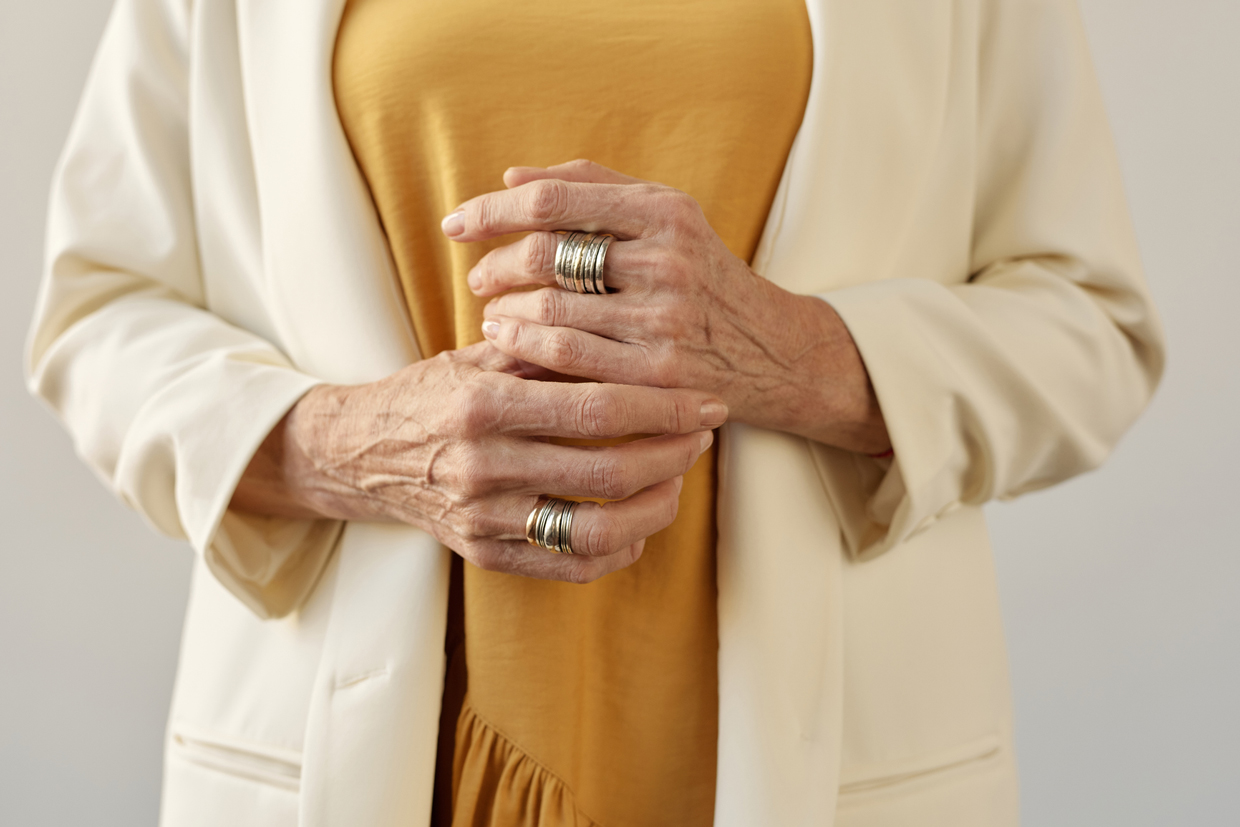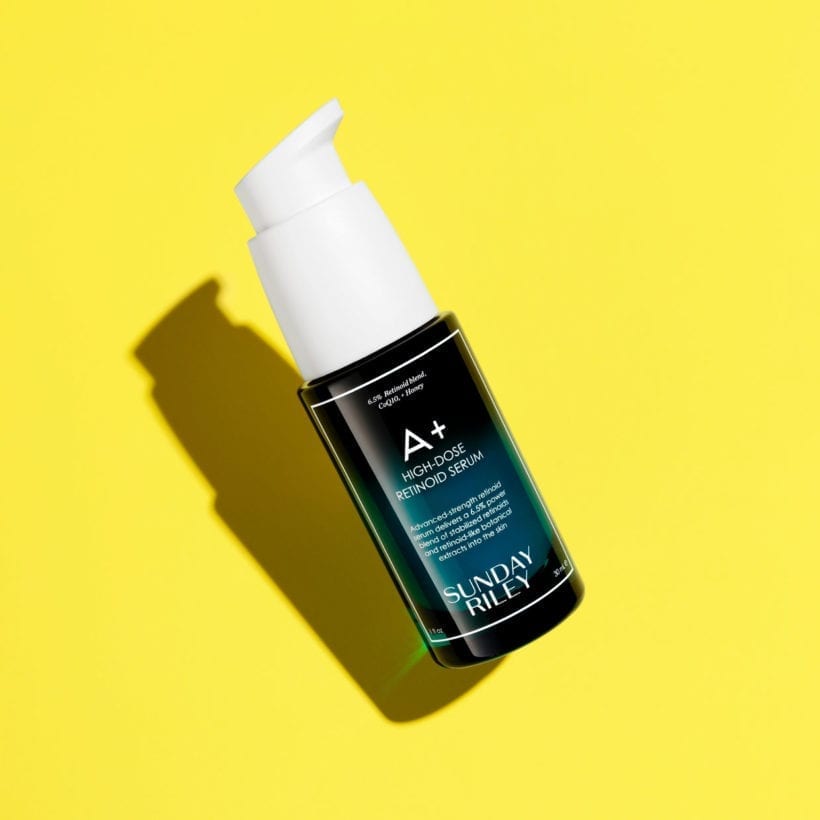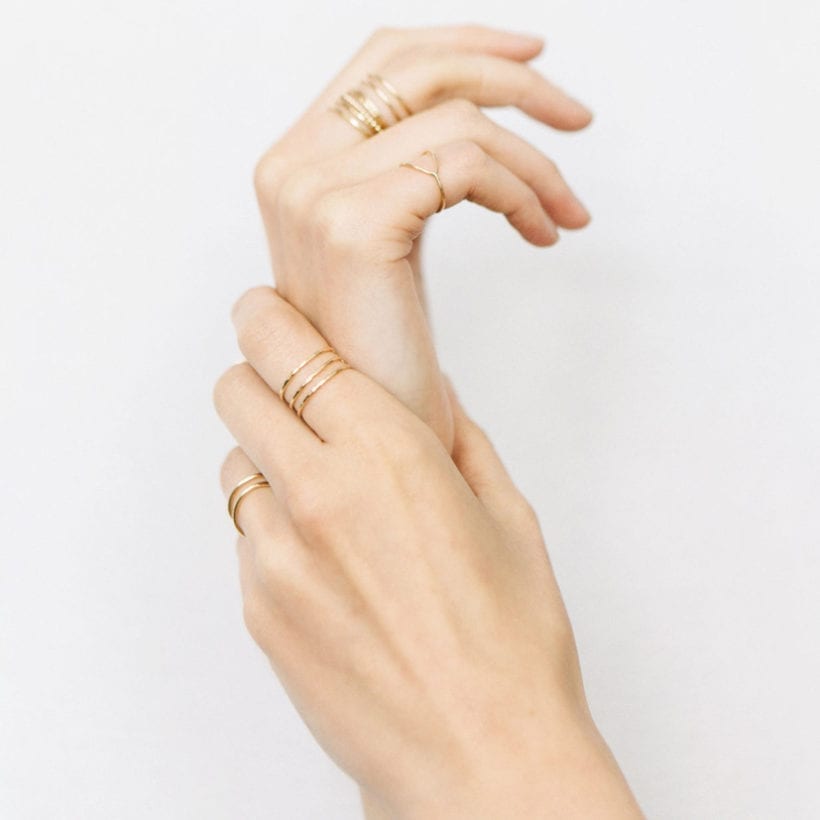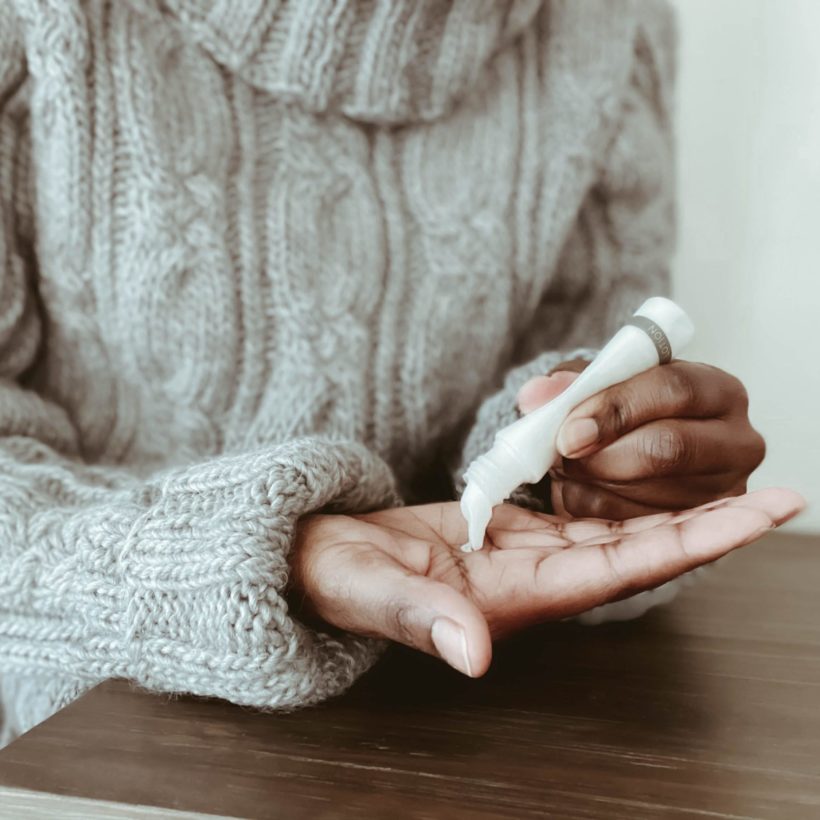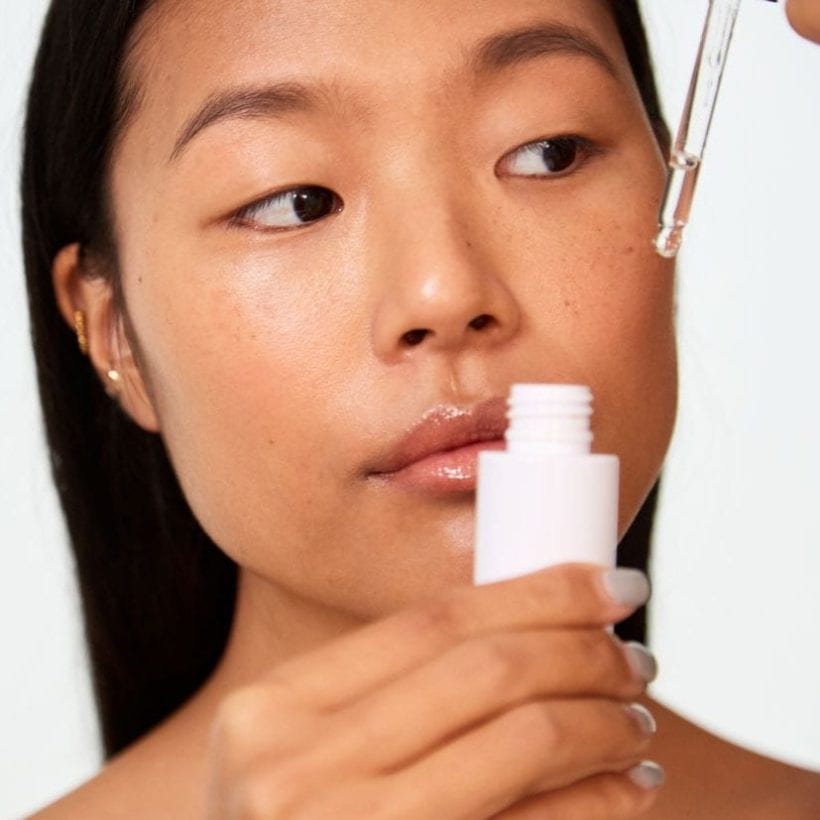We slave away to make our faces lineless and wrinkle-free and our bodies as close to our personal ideals of perfection. But what about the hands? Most of us forget about them when in reality, they deserve as much attention as the rest of the body since the hands can be a dead giveaway as to how old you are. Even research proves that people can tell someone’s age just by looking at their hands.
The hands often look older than our faces due to a combination of age- and environmental-related factors. “The greatest culprit of aging skin is free radical damage,” says board-certified dermatologist Loretta Ciraldo, MD. “We constantly expose our hands to aggressors, like think irritants and pollutants, that cause it, which is why it makes sense that the hands show early signs of aging,” she says. Around the late 30s to early 40s, the hands can become thin, crepey, and laden with sunspots and wrinkles. “Most of us think of hand care as being limited to using some hand cream to moisturize them during the colder months,” she shares. “We don’t think of hand care as a long game, but it truly is.”

The skinny on spots
Failure to wear sunscreen on the backs of the hands leads to increased sun damage and sunspots (also known as solar lentigines or liver spots), which are dark brown or black patches that surface after repeated sun exposure. “The hands are more exposed to the sun than other exposed areas,” says Dr. Ciraldo. “We basically sunbathe them when we are driving, so they develop spots before the face does.”
So many of us neglect our hands and overlook applying sunscreen to them. “Not protecting the hands with sunblock can cause skin cancers to surface,” adds board-certified dermatologist Jeanine Downie, MD. It’s essential to wear sunscreen on them every day, and since the skin on the hands is thinner than that of the face and body, a lightweight formula will suffice. Driving gloves are also a protective option.
In-office treatments, including Glytone’s Hand Peel, which boasts a blend of trichloroacetic, lactic, and kojic acids to lighten dark spots, help to create smoother-looking hands. In addition, a few sessions of Intense Pulsed Light (IPL) or a Yag laser can erase unwanted discoloration and pigment.
You can also maintain the results from your doctor’s office at home with retinol or a retinoid, such as Sunday Riley A+ High-Dose Retinoid Serum. And if dryness becomes an issue, pair it with a moisturizing hand cream to mitigate the retinol’s dehydrating effects.
When thin is not in
It’s not just dark spots that appear with age. Pigmented skin usually comes with thin, bony-looking hands, resulting from fat loss in the hands. “With age, we lose fat, collagen, and unfortunately, some of the muscle tones in the hands, so the tendons become more prominent and create this bony look,” Dr. Downie explains. Couple that with sun damage, and the hands appear old and weathered, and the accompanying skin almost translucent. “And if you smoke — and that goes for smoking anything out of anything — the hands will look ten times worse because smoke and the lack of oxygen ages the hands that much faster,” she points out.
While there’s not much to do from a preventive standpoint, correcting thin hands is easier than you may think. Injecting fillers, like Radiesse, Juvéderm Voluma, and Restylane Lyft, directly into the bony areas of the hands, is the go-to treatment. By plumping up the hands and replacing lost volume, protruding and bulging tendons and veins in the hands are less noticeable.
In some cases, you can even use your fat to plump up your hands. However, bear in mind that a separate liposuction procedure is required. Yet, a bonus of fat transfer to the hands is that the stem cells (naturally found in fat) give a nice youthfulness to the skin. While the results are permanent, expect some post-injection swelling and bruising — the same goes for fillers in the hands, too.
The ever-popular skin rejuvenating treatment, microneedling, is also helpful in stimulating new collagen in thin hands.
There are also at-home options that employ InfraRed light, like the Mesolyft Rejuvenating Gloves, which stimulate collagen to improve the quality of the skin — wear the gloves and let them work their magic.
The effects of thirsty skin
Unlike the face and chest, the hands don’t produce much sebum, so they crave moisture. The best way to supplement a lack of hydration is by using thick hand creams such as Augustinus Bader The Hand Treatment and La Mer The Hand Treatment. “Make it a habit of moisturizing them as much as you can at night with a cream with lots of humectants and mineral oils,” suggests Dr. Downie. Every body part — hands included — look better with a steady dose of hydration.
Watch what you wash with
Just like how you wash your face with one cleanser and your body with another, the same rule of thumb applies to the hands, too. Some soaps contain harsh detergents and chemicals, which Dr. Downie says strip the skin and its natural oils and irritate the hands. “They can leave the hands dry and itchy, and if you start to pick at them, it can make everything worse,” she adds. Instead, opt for gentle formulations made just for the hands’ delicate skin.
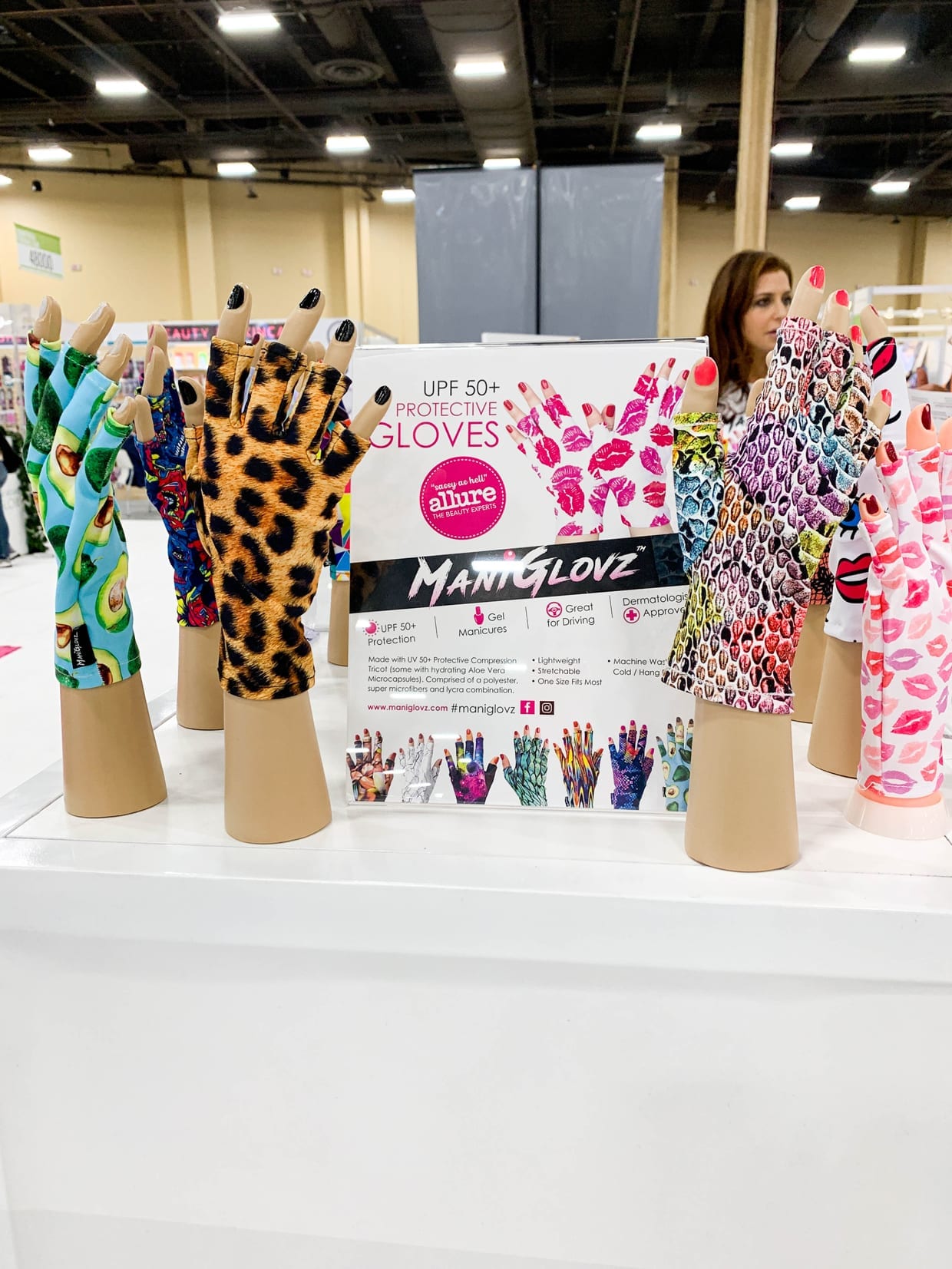
When it comes to exfoliators, keep it gentle. The same goes for the all-elusive hand sanitizer, which no one is without these days. However, Dr. Ciraldo says to be cautious of alcohol, artificial fragrance, and color in them, all of which damages the skin barrier and cause redness and dryness. “Any sanitizer with hydrating and calming ingredients like aloe is great,” she suggests.
And, of course, pamper your digits from time to time with a good manicure for a refresh. If you’re planning on a gel manicure, make sure to protect your hands. “Spots can form on the hands from the curing machine used in gel manicures, so use UV gloves or extra sunblock on the hands beforehand,” advises Dr. Downie.
We only recommend products we have independently researched, tested, and loved. If you purchase a product found through our links, Sunday Edit may earn an affiliate commission.
